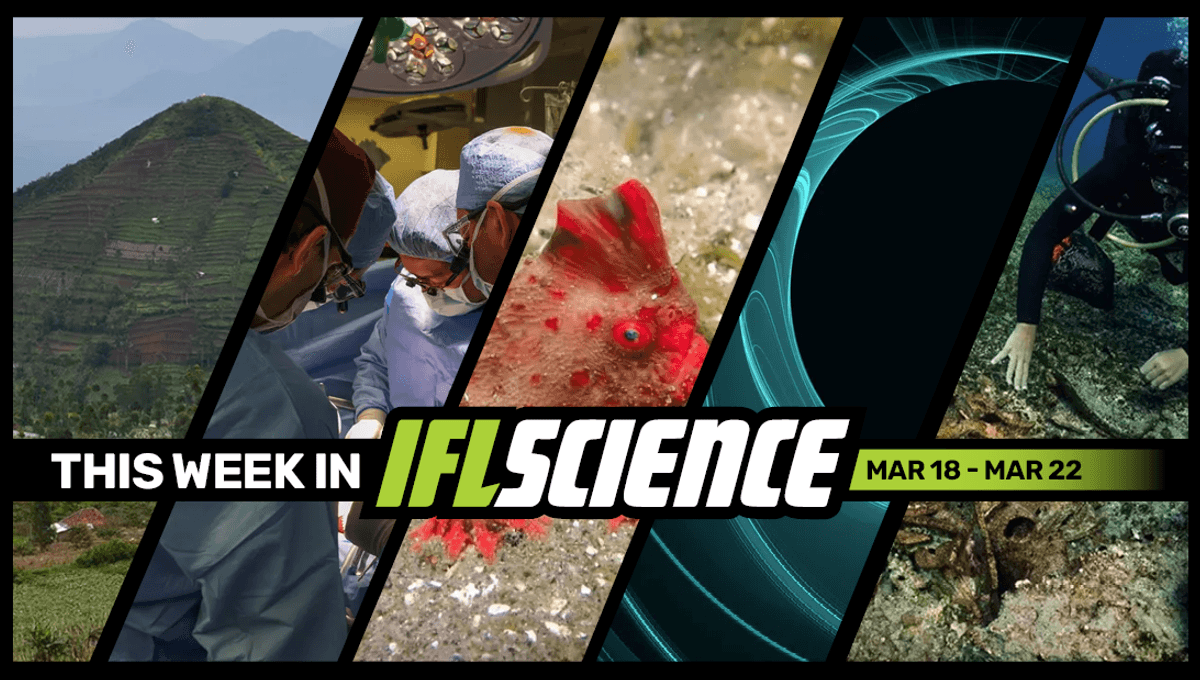
This week, a CRISPR-edited pig kidney has successfully been transplanted into a living person, breeding efforts welcome ridiculous-looking hatchlings of the world’s rarest fish, and scientists simulate black holes in the lab using “quantum tornados” for the first time. Finally, we investigate the longest solar eclipse on record.
Subscribe to the IFLScience newsletter for all the biggest science news delivered straight to your inbox every Wednesday and Saturday.
Study Claiming Humans Built A 25,000-Year-Old Pyramid In Indonesia Removed By Journal
A journal has retracted a controversial study that claimed that humans had begun constructing a “pyramid” in Indonesia as far back as 25,000 years ago. In November 2023, the study garnered a lot of media attention for its extraordinary claim that a mountain in Indonesia is actually the world’s oldest pyramid built by ancient humans. But reactions from archaeologists since publication were highly skeptical about its bold conclusions. Read the full story here
A CRISPR-Edited Pig Kidney Has Been Transplanted Into A Living Person For The First Time
In a world first, doctors at Massachusetts General Hospital (MGH) have successfully transplanted a genetically modified pig kidney into a living human recipient. The patient, 62-year-old Richard “Rick” Slayman, had been living with end-stage kidney disease, relying on dialysis to survive after a previously transplanted human kidney had begun to fail. Read the full story here
The World’s Rarest Fish Is Making A Comeback, One Ridiculous Baby At A Time
Behold, the rarest fish in the world! The red handfish, Thymichthys politus, is known from just two small patches of reef off the coast of Tasmania, thought to be home to around 100 adults. Habitat degradation and climate change have threatened them with extinction, but thanks to a breeding program, they welcomed 21 hatchlings in 2023 and you have to see them. Read the full story here
First-Ever “Quantum Tornado” Lets Scientists Simulate Black Holes In The Lab
Black holes are objects at the limit of our physical theories, so the better we understand them, the better we can test our knowledge of the universe. While astrophysical black holes are studied in so many ways, it would be much easier to analyze one in the lab. Unfortunately, having one in a lab would lead to the destruction of said lab and probably the planet, so scientists have found the next best thing: they have created a simulation using a quantum tornado. Read the full story here
Archaeologists Find Shipwrecks Using Clues From Homer’s Iliad
Archaeologists have used the Iliad, an Ancient Greek epic poem written in the 8th century BCE set towards the end of the legendary Trojan War, as a guide to locate shipwrecks off the coast of Greece. Researchers have located 10 shipwrecks that sunk at points between 3000 BCE to World War II around the island of Kasos. Among these sources was Homer’s Iliad, which references Kasos as a trading hub that joined the fight against Troy. Read the full story here
TWIS is published weekly on our Linkedin page, join us there for even more content.
Feature of the week:
When Was The Longest Recorded Solar Eclipse In History?
Not all solar eclipses are equal – even if we’re ignoring partial and annular eclipses, some are more impressive sights than others. Next month’s North American eclipse will last a lot longer than the 2017 equivalent, but how long can an eclipse theoretically last? And when was the longest eclipse of all? Read the full story here
More content:
Have you seen our free e-magazine, CURIOUS? Issue 20 March 2024 is out now. Check it out for exclusive interviews, book excerpts, long reads, and more.
PLUS, the entire season 3 of IFLScience’s The Big Questions Podcast is available now.
Source Link: 25,000-Year-Old "Pyramid" Not Built By Humans After All, Archaeologists Find Shipwrecks Using Clues From Homer's Iliad, And Much More This Week